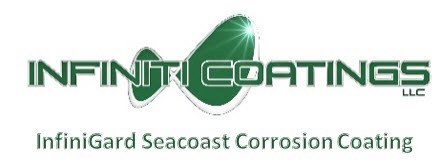Coastal HVAC Corrosion Protection Coating

Coil corrosion is a major problem in the HVAC industry, and it is one that can require some expensive repairs. Coil corrosion can lead to decreased efficiency and eventual equipment failure, which may warrant an entire system replacement. Corrosion could occur within weeks of installing your new HVAC system or it may take several years to present itself, but the right corrosion protection coating can prevent the problem.
What Causes Corrosion?
Many coastal residents do not realize that their HVAC systems are at risk of corrosion. Unfortunately, ocean salt and other pollutants can wear down the coils of a unit. There are two main types of corrosion that may pose a problem:
- Pitting. Corrosion caused by the exposure of coil to chloride or fluoride. This type tends to move quickly and will create holes that lead to refrigerant leaks from the coils.
- Formicary corrosion. Corrosion caused by exposure to acids, such as those found in cleaning solvents, adhesives, paint, insulation, and other materials. This type of corrosion is more subtle and will take longer before discovery.
How Can You Protect Your System?
 To combat and prevent the problem of corrosion, protective coatings can be applied to HVAC coils. There are many coating options available, although two of the most popular are epoxy phenolics and modified phenolics. To effectively protect HVAC coils from salt and other corrosive elements, coatings should be applied at a thickness of no more than 0.003 inches. When applied at a greater thickness, the rate of heat transfer could be impacted.
To combat and prevent the problem of corrosion, protective coatings can be applied to HVAC coils. There are many coating options available, although two of the most popular are epoxy phenolics and modified phenolics. To effectively protect HVAC coils from salt and other corrosive elements, coatings should be applied at a thickness of no more than 0.003 inches. When applied at a greater thickness, the rate of heat transfer could be impacted.
Infinigard is one of the most trusted names in HVAC corrosion protection. This two-part hybrid corrosion inhibitor is designed to increase liquid and gaseous flow rates while decreasing kilowatt hours. In addition to protecting the coils from corrosion, Infinigard can reduce air conditioning energy costs by up to 15%. Your HVAC system will be properly protected while improving both efficiency and indoor air quality.





